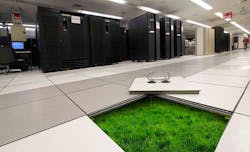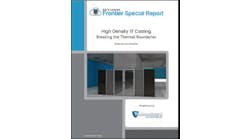The data center has become the front line in the technology industry’s push to address climate risk. Despite the Trump administration’s decision to withdraw the United States from the Paris Agreement on climate change, the data center industry is continuing to lead the shift to renewable energy to power the Internet economy.
As cloud computing platforms become some of the largest consumers of electricity, they are shifting to solar and wind to power their servers. In 2016, data center providers signed contracts for more than 1.2 gigawatts of renewable power, marking a dramatic turnaround from earlier headlines critiquing the industry’s dependence upon “dirty coal.”
That trend will continue, leading technology executives said.
“Withdrawing from the Paris climate agreement is bad for the environment, bad for the economy, and it puts our children’s future at risk,” said Facebook founder and CEO Mark Zuckerberg. “For our part, we’ve committed that every new data center we build will be powered by 100 percent renewable energy. Stopping climate change is something we can only do as a global community, and we have to act together before it’s too late.
Google has taken a leadership position in procuring renewable energy to power its data centers, lining up power purchase agreements (PPAs) totaling more than 2.6 gigawatts of wind and solar energy capacity.
“Driving the Industry Forward”
Google Vice President of Data Centers Joe Kava says huge cloud operators have a responsibility to use their buying power to drive changes in the U.S. utility industry, which should boost its mix of renewables and make clean energy available to more customers.
“We believe the science of climate change is irrefutable,” Kava said at a recent DataCenterDynamics conference. “We want to provide the utility business model to deliver what consumers want to buy. It’s clear to me that corporate consumers are interested in buying renewable energy. We’ve been trying to drive the industry forward with work on policy.”
Amazon and Microsoft have joined Google and Facebook in their commitment to powering their cloud platforms with renewable power.
Many of these purchases by hyperscale data center providers have created new production of clean energy, as opposed to credits for use of clean energy from existing sources. This “additionality” is a key strategic priority for Google and several other large cloud customers, who want their investments to support a longer-term shift away from fossil fuel.
Beyond Hyperscale: Greening Service Providers
It’s no longer just the hyperscale data center operators who are buying green power. A growing number of multi-tenant data center operators are procuring renewable power for their data centers, including providers focused on regional or second-tier markets.
These include Switch, which operates the SUPERNAP campus in Las Vegas and just opened its new Citadel Campus in Reno. Switch was recently cited by Greenpeace for its leadership on renewable energy, which includes use of 100 percent renewable energy for all of its data centers, its advocacy for policies that support renewable energy, and its transparency in reporting green house gas emissions on a per-site basis.
Other multi-tenant providers prioritizing renewable energy for their customers include Equinix, Infomart, Digital Realty and Iron Mountain.
Iron Mountain says buying renewable energy helps it meet its corporate social responsbility goals. But more importantly, it addresses “growing demand for data center services with affordable, clean, sustainable power,” said Mark Kidd, senior vice president and general manager, Iron Mountain Data Centers.
The company’s customers include many federal agencies and systems integrators that must comply with regulations for the Data Center Optimization Initiative (DCOI) and Executive Order (EO) 13693, enabling Federal Agencies and integrators to meet requirements for energy-efficient, sustainable data centers.
It’s not just government customers demanding that their colocation and data center space be renewable powered.
Customers Seeking Renewable Energy
A group of large tech companies is seeking to improve the green power options available to colocation customers. Fourteen companies are working with non-profit BSR, which has developed the Corporate Colocation and Cloud Buyers’ Principles to outline best practices for using renewable energy in multi-tenant facilities.
“If you’re Facebook you can build your own data center and choose your own power,” said Kelly Gallo, a Manager with the Future of Internet Power initiative at BSR. “If you’re not, it’s a challenge to work with your colocation provider to find options.”
BSR (short for Businesses for Social Responsibility) has started the conversation with its buyers’ principles, which outline best practices in six areas. The principles have been embraced by some of the largest users of colocation space, with signees including Facebook, eBay, LinkedIn, Akamai, Oracle, Salesforce, Workday, Adobe, HPE, Intuit, Etsy, VMware, Autodesk and CA Technologies. BSR has also sought input from leading colocation providers, including Equinix, Digital Realty, Infomart Data Centers and IO.
The push for a cleaner cloud now spans hyperscale and service provider data centers. The greening of the IT sector will continue as more companies move their equipment out of aging on-premises facilities and into more efficient data centers powered by renewable energy.
“We’ve been incredibly good at improving as an industry,” said KC Mares of Megwatt Consulting, a leading advocate for sustainable computing. “We have become part of the solution. We’ve made our economy more energy efficient.”






